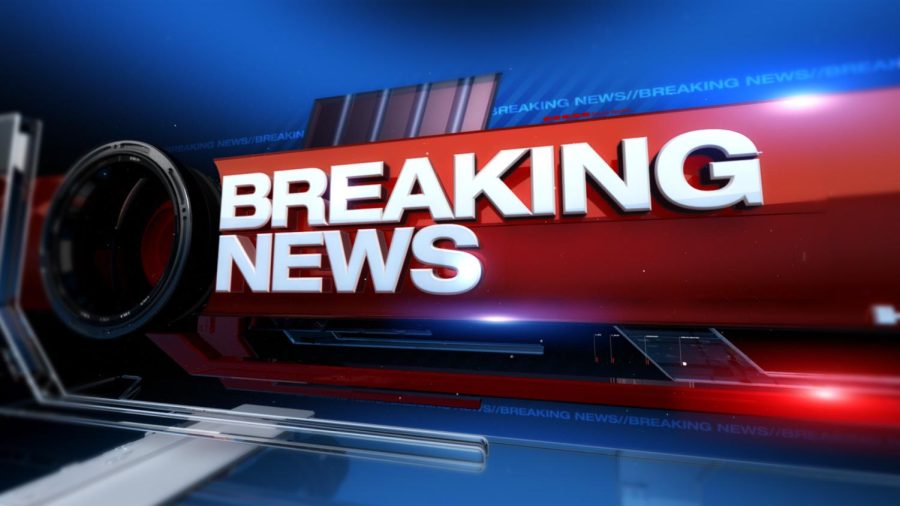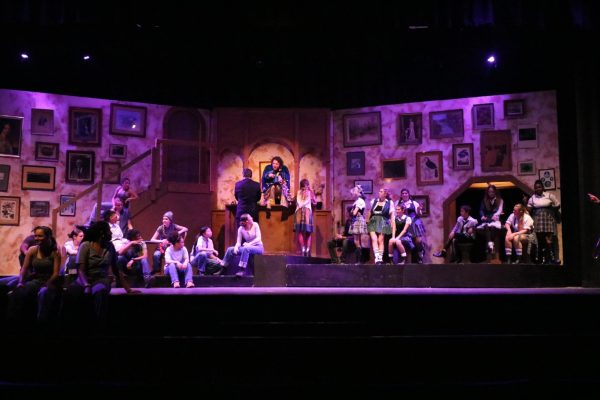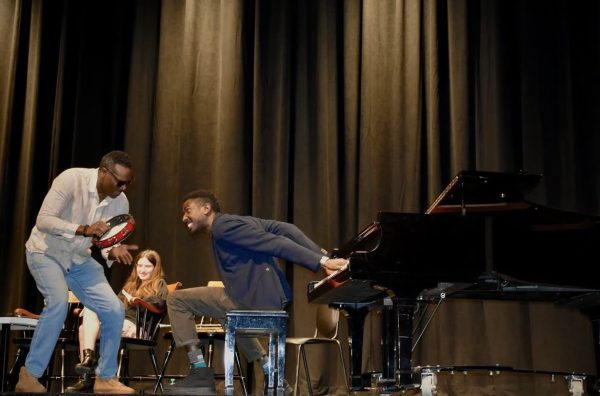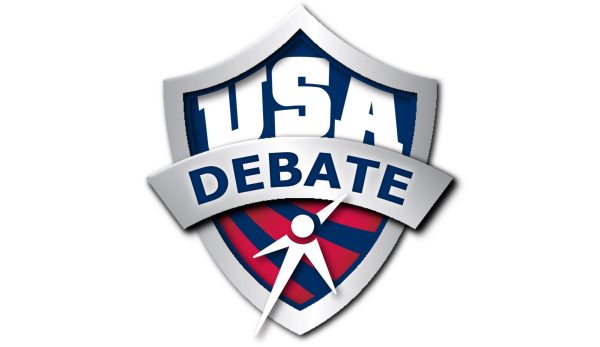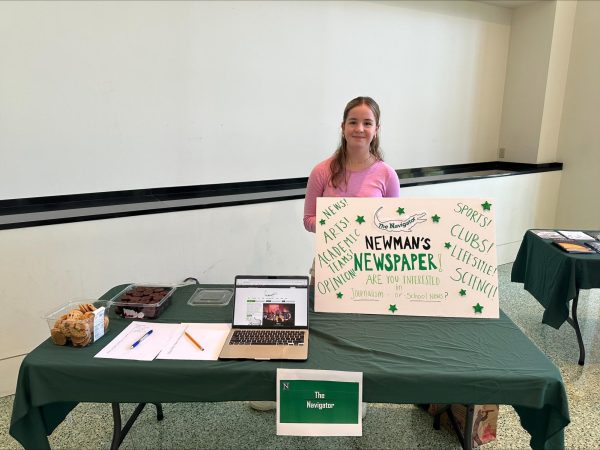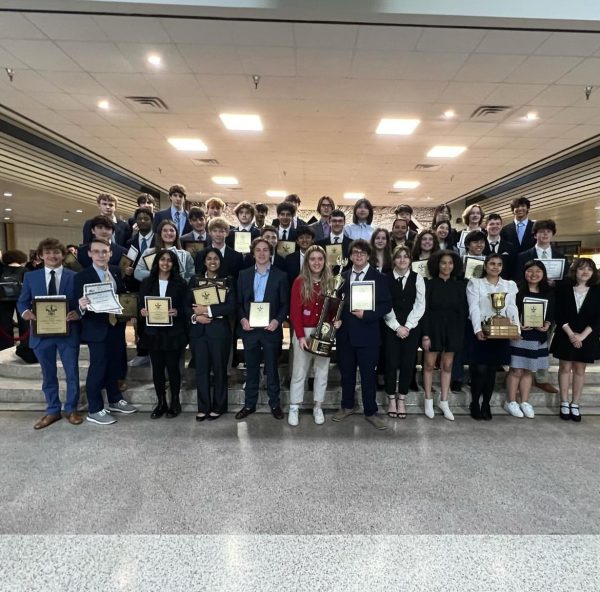“Breaking News”
A sneak-peak at a script from Speech and Debate
So I’m flipping through news channels on the TV, right: “Breaking News: 100th day of the Russia-Ukraine war” – “12.8 million people displaced in Ukraine” – “10 mass shootings in 2 days” – “Covid cases lingering” – “Uvalde Shooting” –“Women’s rights” – “Gay rights” – “Gun rights” – “Geiko can save you 15% or more on car insurance” – “Are you having trouble sleeping? So is Jennifer Anniston. But this new sleeping pill will solve all your problems” – “Stay Tuned for Tom with the weather!”
Look, I like to be informed, but something about the news really stresses me out, and I don’t think it’s Gieco. And I don’t think sleeping pills are the solution, So I turn off the TV. And I’m not alone in that; according to the San Francisco Chronicle’s survey, 68% of people are stressed by the news and as a result 54% said they’ll deliberately avoid it.
It’s no surprise that the publicity of current events has exponentially increased. It has unavoidably become a bigger part of our lives as informed citizens. We all know this. But now, current news media seem to constantly report new tragedy after new tragedy – and all this being broadcasted 24/7, despite the fact that we have literally created a new word (doomscrolling) because we know how bad this is for our mental health. Combine this with other issues with news coverage, like biased reporting, fake news, polarization, desensitization, willful ignorance, group think …It’s seriously time to ask, if we’re going the right direction with increasing our increasingly complicated news coverage. Is this really the right way to inform the public? Or are we just sensationalizing tragedy after tragedy, spiraling while we wait for the camera to change to the next one?
There’s no better way to answer that question than to compare today’s overabundance to its past history, of, well, not abundance. So let’s set the scene: Lights, Cameras, Action. Let’s compare the history of social media where, unlike today, there was too little light, too few cameras, and not enough action. Because in our democracy, news coverage dictates who we are as informed citizens, but we are ultimately responsible for what happens next.
So, too little light. PBS reports: when the U.S. entered World War One, news reports and radios were only used by the military. Then the Espionage and Sedition Acts “made it illegal to publish anything disrespectful to the government, the flag, or even the uniforms of American troops”, so information about the war was very limited. And in WWII: everything the press published had to be approved first, so stories like the progress of the Holocaust and the creation of the a-bomb weren’t allowed to be public until after the war.” Instead, the few camera crews that were allowed stayed in noncombat areas and shared good news, avoiding listing casualties or setbacks. Under these kinds of stage lights, the war seemed like something to be proud about.
But things changed by the 1970s when Vietnam became the first televised war. As the war itself spiraled out of control, so did the press restrictions. From 1950 to 1966, the percentage of Americans who owned a television skyrocketed from 9 percent to 93 percent. And from a PR standpoint, Vietnam was a fiasco. In contrast to the glorious reports of WWI and WWII, cameras were almost constantly in combat zones. And Americans didn’t like what they saw. So anti-war advocates, fueled by television coverage, got the US to withdraw their troops in 1973.
But what about too few cameras? Many historic events have been documented and reported, but not with the full coverage they deserve – or, even worse, only seen through one lens of propaganda.
For example, Ukraine’s war with Russia right now is not a new concept. Russia had done the exact same thing to the Republic of Georgia from 1991 to 1993. (To clarify: Republic of Georgia) Like with Ukraine, Russia claimed there were ethnic disputes and launched a full-scale military invasion, but called it a “peace enforcement” operation in their propaganda. This series of ethnic disputes in Georgia resulted in thousands of deaths and about 260,000 displaced persons. My mom is one of those people, who had to flee incoming invasions and bombs and riots when she was just a few years older than I am. Her family had no idea where they were going or if they would ever be able to return home. She only was able to save a handful of things from her childhood, and one of them is a class photo. She showed it to me once, and I expected her to remember the good times and tell me funny stories, but instead, all she can say is the names of her friends who had died during the war or been displaced to random parts of the world. Names that very few people will ever hear or recognize. Today, my mom lives a normal life as an American citizen, surrounded by a public that’s entirely unaware this even happened.
But even though no one really knows about Georgia’s Ethnic Wars, it wasn’t entirely undocumented. There was one camera on the scene: the Russian government. As a consequence, Russia’s propaganda entirely controlled the public view of this event.
And now, Russia is once again trying to filter the truth. On March 4th of this year, as a response to the uproar caused by the invasion of Ukraine, the Russian Parliament passed a law to criminalize what it deems false information about Russia’s military. Anyone, including non-Russian citizens, can face up to 15 years in prison for saying anything other than the Russian Government’s narrative. But fortunately, unlike Russia’s invasion of Georgia, there is more than one angle of reporting on this scene – even if it’s not the most recent headline in the US right now, it’s clear the world won’t let Putin’s propaganda go unchallenged.
Which brings me to the third and final lens where news media coverage has grown. Having increased exposure to serious problems has prompted much needed and long overdue public action. It is an undeniable fact that racial discrimination has been a problem in the United States since its beginning. Yet, there’s hardly been substantial social change. But then, on May 25th of 2020, 17 year old Darnella Frazier uploaded a video on Facebook that was 8 minutes and 46 seconds. By the next day, there were protests in Minneapolis. The publicity of George Floyd’s murder shook the world and sparked a massive influx of activism in the Black Lives Matter Movement. The New York Times reported that 15 million to 26 million people in the U.S. have participated in protests, which potentially makes the Black Lives Matter movement one of the largest movements in US history. While we are still in a long and hard battle to fight police brutality, discrimination, and systemic racism, the publicity of such a horrible tragedy sparked much needed awareness and urgency – and in effect, action.
All in all, news coverage makes a substantial difference. This is proven when we see moments in history that lacked this exposure. The limited reports of WWI and II vs the T.V. coverage that sparked antiwar protests of Vietnam. The one-sided justification over the invasion of Georgia vs the global solidarity against the invasion of Ukraine. Unrecognized moments of police brutality vs the publicly recognized murder of George Floyd.
Watching the news still stresses me out, but in a democracy, our abundance of news coverage should never be taken for granted. I’ve come to appreciate our ever-growing media coverage as it sheds lights on new events, and cameras on stories that will no longer be overlooked. But the action that follows- that’s on us.
So lets break free from doomscrolling breaking news and truly seek to understand.
And up next, here’s Tom with the weather.
Liked what you read? This was written as a script for an informative speech in Speech and Debate for the 2021-2022 season. Talk to Mr. Vincent to get involved in writing and performing your own!
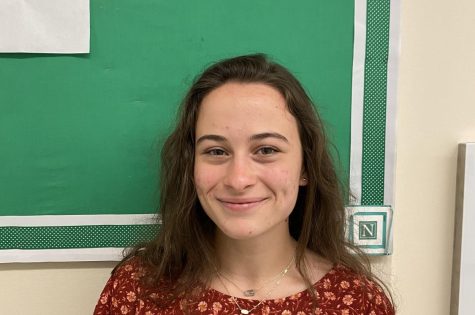
Isabelle (Class of 2023) is a four-year veteran of the Navigator crew. She loves to write opinion pieces unprompted and also commonly sponsors the Varsity...

